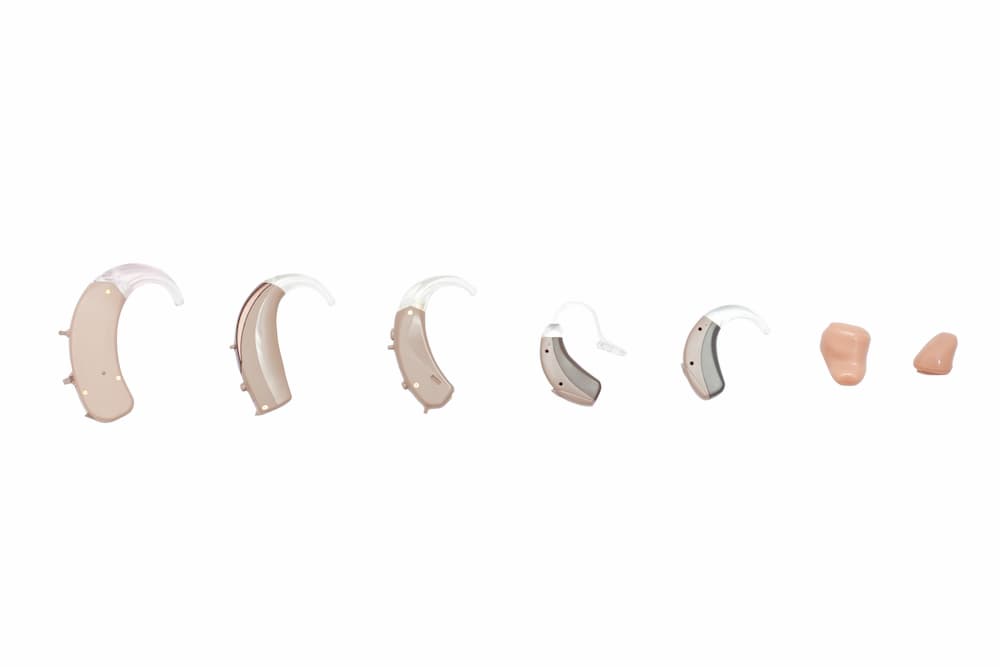Getting your hearing aids wet is an accident that can happen to just about anybody. Unfortunately, as common of a mistake, this may be, it can also be an expensive one. Whether you use rechargeable hearing aids or disposable battery hearing aids, both types are susceptible to damage from water exposure.
Water and hearing aids simply don’t mix. Like most electronic devices, hearing aids should be kept away from water. And although your hearing aids may be labeled as “water-resistant,” that’s markedly different from “waterproof” – which means that showing, bathing, and swimming with hearing aids should all be avoided.
Luckily, there are options for rescuing hearing aids that have gotten wet. With our top tips for what to do if your hearing aids get wet, you might just be able to have them back in working shape in no time at all.
How to Dry Hearing Aids After Getting Wet
Even the most conscientious hearing aid wearer can end up in a dilemma that involves wet hearing aids. Despite our best efforts, accidents happen – but there are steps you can take to remedy the situation. Here is a step-by-step guide for drying out hearing aids and potentially saving them from permanent damage:
- First and foremost, avoid panicking. The last thing you want is for your panic to make you clumsy or careless, and result in further damage. Make sure you take your hearing aids far away from the water source before beginning the process of drying them out.
- If your hearing aids are on, turn them off (leave them off until drying is complete). If they utilize zinc-air batteries, remove and dispose of them immediately. At this point, you will not yet be placing new batteries in the devices.
- Gently shake the hearing aids to remove any excess water, then carefully wipe them down with a soft rag or clean paper towel. Although hearing aid cleaning tools can be helpful, poking around too much can lead to accidental damage.
- Now, it’s time to dehumidify the hearing aids. One of the most effective methods for drying out hearing aids is to use uncooked rice. Place about one cup of uncooked rice in a zip-top bag, then add your hearing aid components. Leave the bag sealed overnight, and the rice will work to soak up the moisture. NOTE: Make sure to keep hearing aids away from locations with direct heat, such as the top of a radiator, as this can cause even worse damage. Never place your hearing aids in a microwave or oven because the components will simply melt beyond repair. If you are in a hurry, using a hairdryer on the “cool setting” is one option, but it is vital that you are not blowing hot air on your device.
- After you’ve dried your hearing aids, replace the battery, and power them on. If there are still persistent issues, contact an audiologist for repair.
Resolve Your Hearing Aid Issues with Help from Memorial Hearing
If you’ve tried some suggestions, but are still dealing with damaged hearing aids that aren’t functioning correctly, it’s time to turn to the experts. At Memorial Hearing in Houston, TX, we have extensive experience in dealing with wet hearing aids and may be able to help.
Our skilled staff facilitates hearing aid repairs in Houston and may be able to save you the cost of replacement. And in the event that your hearing aids are beyond saving, we carry a wide selection of the best hearing aid brands in the industry, offering replacement options that are both top-quality and fairly priced.
At our Houston audiologist office, Memorial Hearing, you can be confident that you’ll be treated with the compassionate care and consideration you deserve. For Dr. Elly Pourasef and the rest of our team, supporting our patients in restoring their hearing and quality of life is always our guiding mission.
As one of the leading audiologists in Houston, Dr. Elly Pourasef provides a level of professionalism, service, and understanding that few others can offer. Whether you’re in need of a diagnostic hearing test or want to upgrade your hearing aids, Memorial Hearing should be your first choice.
Learn more about what to do when your hearing aids stop working and which replacements are right for you by scheduling your appointment at Memorial Hearing today.
________
Image credit: Shutterstock / Aerogondo2

